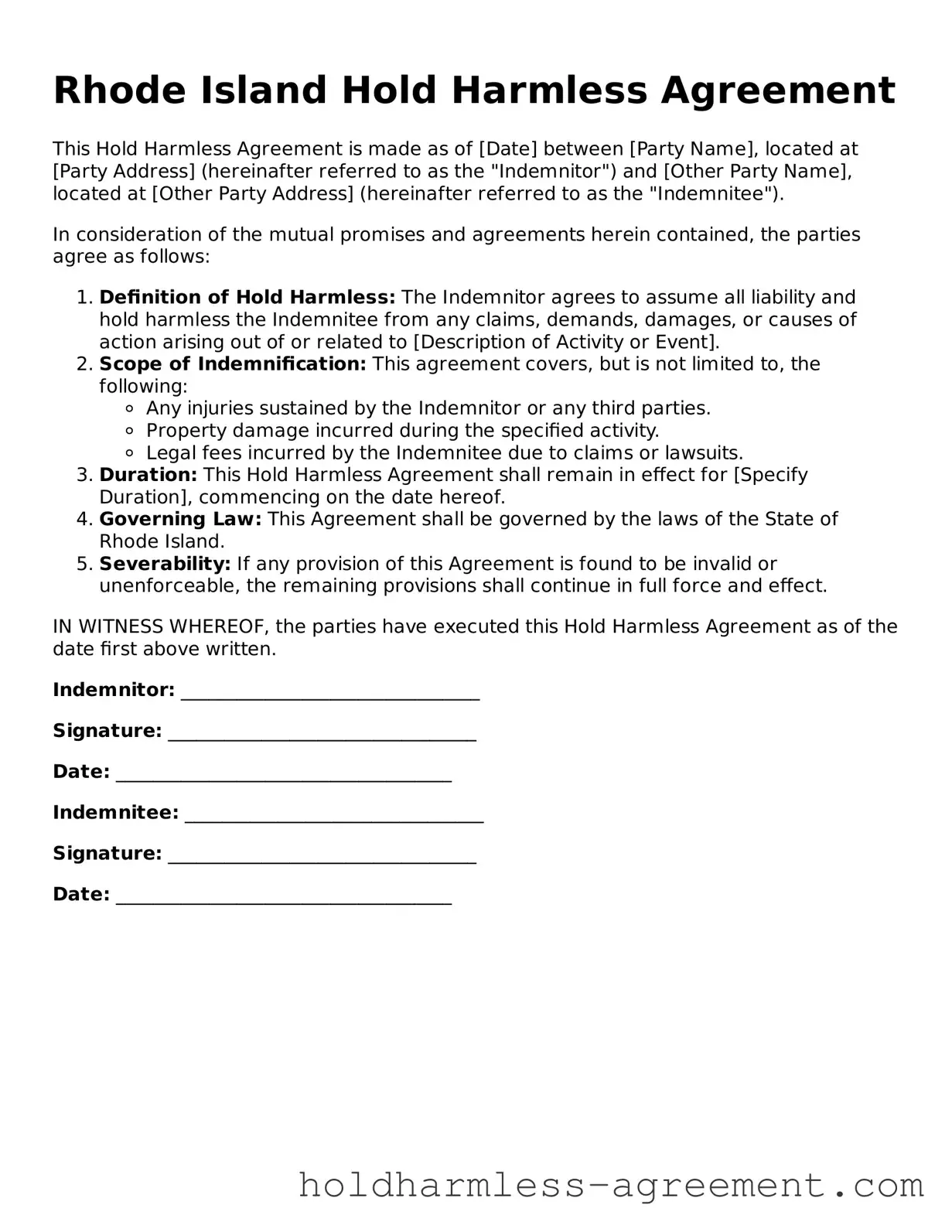What is a Hold Harmless Agreement?
A Hold Harmless Agreement is a legal document in which one party agrees to assume the liability and protect another party from any potential claims, damages, or losses that may arise during a specific activity or event. This agreement is often used in situations where there is a risk of injury or damage, such as during construction projects, events, or recreational activities.
Why is a Hold Harmless Agreement important in Rhode Island?
In Rhode Island, a Hold Harmless Agreement serves to clarify responsibilities and liabilities between parties. It can help protect individuals and organizations from financial losses due to lawsuits or claims arising from accidents or injuries. By having this agreement in place, parties can minimize their risk and ensure that they are not held responsible for unforeseen incidents.
Who should use a Hold Harmless Agreement?
Various individuals and organizations can benefit from using a Hold Harmless Agreement, including:
-
Contractors and subcontractors
-
Event organizers
-
Property owners
-
Businesses hosting activities on their premises
-
Non-profit organizations
Essentially, anyone engaging in an activity that carries a risk of liability should consider using this agreement.
What should be included in a Hold Harmless Agreement?
A comprehensive Hold Harmless Agreement should include the following key elements:
-
The names and contact information of all parties involved
-
A clear description of the activity or event
-
A statement of assumption of risk by the party signing the agreement
-
Details on the extent of liability coverage
-
Signatures of all parties involved
Including these elements helps ensure that the agreement is enforceable and clearly outlines the expectations of each party.
Is a Hold Harmless Agreement legally binding in Rhode Island?
Yes, a Hold Harmless Agreement can be legally binding in Rhode Island if it is properly drafted and executed. However, certain limitations may apply. Courts may not enforce agreements that are deemed overly broad or unfair. It is crucial to ensure that the language used in the agreement is clear and specific to avoid any potential legal issues.
Can a Hold Harmless Agreement be modified after it is signed?
Yes, a Hold Harmless Agreement can be modified after it is signed, but both parties must agree to the changes. It is advisable to document any modifications in writing and have both parties sign the revised agreement. This helps maintain clarity and ensures that all parties are aware of the updated terms.
How does a Hold Harmless Agreement differ from insurance?
A Hold Harmless Agreement and insurance serve different purposes. While a Hold Harmless Agreement transfers liability from one party to another, insurance provides financial coverage for potential claims or damages. Having both in place can offer comprehensive protection, as the agreement limits liability, while insurance covers financial losses if a claim arises.
When should I seek legal advice regarding a Hold Harmless Agreement?
It is advisable to seek legal advice when drafting or signing a Hold Harmless Agreement, especially if the agreement involves significant risks or financial implications. A lawyer can help ensure that the agreement is fair, enforceable, and tailored to the specific circumstances of the parties involved. Consulting with a legal professional can provide peace of mind and protect your interests.
Hold Harmless Agreement forms can often be found online through legal document websites or local government resources. Additionally, you may consult with a lawyer who can provide a customized agreement based on your specific needs. It’s important to ensure that any form you use complies with Rhode Island laws and regulations.
